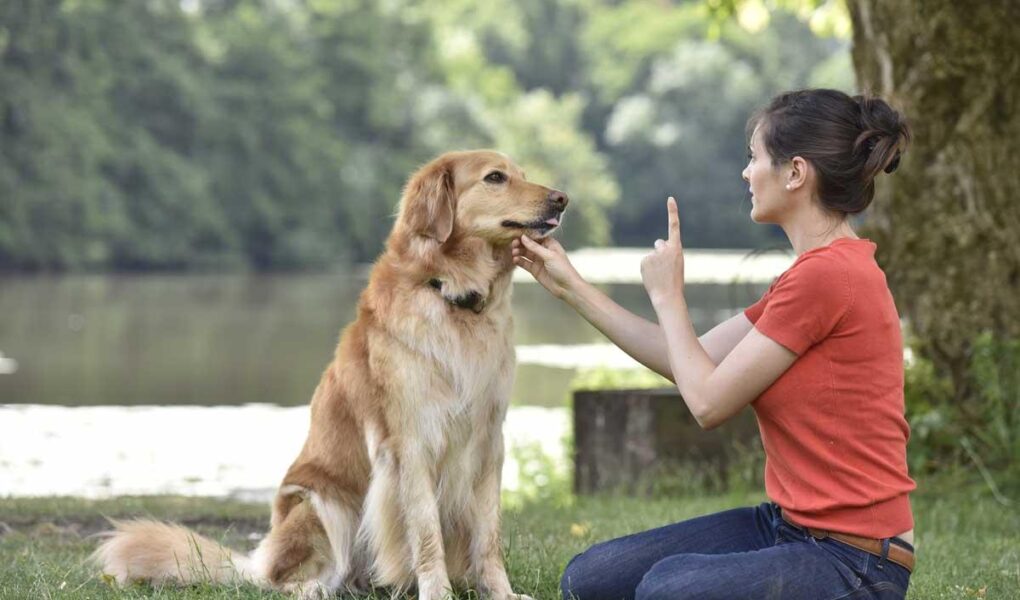Title: Understanding the Foundations of Dog Obedience
In a world where companionship often takes on four furry paws, the bond between humans and dogs transcends mere friendship; it is a partnership forged through trust, communication, and understanding. At the heart of this dynamic relationship lies the concept of obedience—a vital framework that shapes not only a dog’s behavior but also enhances the overall harmony within a household. Dog obedience is more than just teaching commands; it is about fostering an environment where dogs feel secure and valued, empowering them to respond confidently to their human companions. This article delves into the principles and practices of dog obedience, exploring the various methods that can nurture a well-behaved pet while also unraveling the deeper psychological aspects that inform a dog’s learning process. Join us as we embark on a journey to uncover the essential role obedience plays in cultivating a loving and respectful relationship between dogs and their owners.
Table of Contents
- Understanding the Canine Mind for Effective Training
- Essential Techniques for Building a Strong Obedience Foundation
- The Role of Consistency and Patience in Dog Training Success
- Common Challenges in Dog Obedience and How to Overcome Them
- Q&A
- To Wrap It Up
Understanding the Canine Mind for Effective Training
To effectively train your dog, it is essential to first grasp the underlying principles of canine cognition. Dogs possess a unique way of perceiving the world, shaped by their instincts and experiences. Recognizing their natural behaviors allows trainers to tailor their methods for optimal results. Key aspects to consider include:
- Social Structure: Dogs are pack animals who thrive on hierarchy and social bonds.
- Communication: Dogs use body language and vocalizations to communicate. Understanding these cues can enhance training.
- Learning Styles: Just as humans have different learning preferences, dogs also have unique ways of absorbing information.
Training should be built upon positive reinforcement techniques that align with what motivates each dog. Understanding what drives a dog—whether it be treats, praise, or playtime—can significantly impact training success. The following table illustrates common motivators used in dog training:
| Motivator | Description |
|---|---|
| Treats | Small, tasty rewards that reinforce desired behavior. |
| Praise | Verbal affirmations or petting that boost a dog’s confidence. |
| Toys | Engaging playtime rewards that stimulate a dog mentally and physically. |
Essential Techniques for Building a Strong Obedience Foundation
Establishing a strong obedience foundation begins with clear and consistent communication. Use simple commands that your dog can easily understand, such as “sit,” “stay,” and ”come.” Make sure to reward them with treats or praise immediately after they respond correctly. This positive reinforcement strengthens their association between the command and the action, fostering a sense of accomplishment. Incorporate short training sessions throughout the day to keep your pup engaged and focused; even five to ten minutes can be beneficial. Consistency is key, so practice these commands in a variety of environments to help your dog adapt to distractions.
Another vital aspect of developing obedience is the socialization of your dog. Expose them to different people, pets, and situations to build their confidence and reduce anxiety. Implement controlled introductions during walks or at puppy classes, allowing your dog to interact with others while reinforcing good behavior. Here are some quick socialization tips to consider:
- Attend puppy training classes.
- Arrange playdates with well-mannered dogs.
- Visit parks and pet-friendly stores.
| Socialization Activity | Frequency |
|---|---|
| Puppy training class | Weekly |
| Playdates | Bi-weekly |
| Park visits | 3 times a week |
The Role of Consistency and Patience in Dog Training Success
When embarking on the journey of dog obedience training, it’s essential to establish a strong foundation based on consistency and patience. This approach directly influences the effectiveness of training sessions and the overall relationship between you and your furry friend. Consistency means sticking to the same commands, rewards, and routines every time, which helps your dog form clear associations between actions and expected behaviors. Here are some key points to consider:
- Uniform Commands: Use the same words for commands to avoid confusing your dog.
- Set a Schedule: Regular training sessions reinforce learning and establish a familiar routine.
- Consistent Rewards: Use the same motivation methods, such as treats or praise, to encourage good behavior.
However, consistency alone won’t yield results overnight; it must be coupled with patience. Training a dog is a gradual process, as different dogs learn at their own pace. Recognizing that setbacks can occur is part of the journey. Celebrate small victories and remain calm during challenges. Consider these strategies to enhance your patience during training:
- Realistic Expectations: Understand that mastering commands can take time, especially for younger or less experienced dogs.
- Positive Mindset: Focus on the progress made rather than dwelling on mistakes or setbacks.
| Consistency Practices | Patience Strategies |
|---|---|
| Use the same verbal commands | Celebrate small achievements |
| Stick to a training schedule | Maintain a calm demeanor |
| Reward behaviors consistently | Acknowledge your dog’s unique learning pace |
Common Challenges in Dog Obedience and How to Overcome Them
Training your dog can sometimes feel like an uphill battle, especially when faced with common challenges. Inconsistent behavior is a major hurdle that many dog owners encounter. This may stem from mixed signals given by family members or differing training methods. To combat this, it’s essential to establish a consistent training routine and ensure everyone in the household adheres to the same commands and expectations. Establishing clear rules will help solidify your dog’s understanding of what is acceptable behavior. Additionally, consider seeking the assistance of a professional trainer to develop a unified training approach.
Another frequent issue is distractions during training sessions. Dogs are naturally curious and can be easily sidetracked by their environment. To enhance focus during training, try the following strategies:
- Choose a quiet training location free from distractions.
- Gradually introduce distractions as your dog becomes more confident in their commands.
- Utilize high-value treats to maintain their attention.
Q&A
Q&A: Unlocking the Secrets of Dog Obedience
Q1: What is dog obedience and why is it important?
A: Dog obedience refers to the training process that teaches dogs to respond reliably to commands and behave in a manner that is acceptable within their human environment. It’s important not only for the safety and well-being of the dog but also for fostering a harmonious relationship between dogs and their owners. A well-trained dog is more likely to be welcomed in various situations, whether at home, in public, or around other pets.
Q2: At what age should I start training my dog?
A: The earlier, the better! Puppies can begin basic obedience training as early as 7 to 8 weeks old. At this age, their brains are like sponges, soaking up new information. However, it’s equally crucial to continue training throughout the dog’s life. Consistent practice and reinforcement help solidify learned behaviors, making training a lifelong commitment.
Q3: What are some basic commands I should teach my dog?
A: Start with foundational commands such as “Sit,” “Stay,” “Come,” “Down,” and “Leave it.” These commands establish a good framework for communication and can help keep your dog safe in various situations. Additionally, teaching a “Heel” command can help during walks, ensuring that your dog is well-behaved and by your side.
Q4: How can I make training fun for my dog?
A: Incorporating games and positive reinforcement can turn training into an enjoyable experience! Use treats, praise, and playtime as rewards. Activities such as fetch or hide-and-seek can also be great ways to reinforce commands. Remember, training should be a joyous journey for both you and your dog, so keep sessions short and engaging to maintain their interest.
Q5: What should I do if my dog doesn’t obey a command?
A: Patience is key! Dogs might not always respond perfectly, especially in distracting environments. If your dog struggles with a command, it could be beneficial to simplify the training context or break down the command into smaller, manageable steps. Consistency in your commands and methods is essential, and rewarding progress, no matter how small, can motivate your dog to improve.
Q6: Are there any common mistakes to avoid during training?
A: Yes! One common mistake is inconsistency in commands or expectations. If you use different words for the same command or varying tones, your dog may become confused. Another pitfall is over-correction—positive reinforcement tends to yield better results than negative feedback. don’t forget to keep sessions short and positive; forcing a dog to train when they’re disinterested can lead to frustration for both you and your pet.
Q7: How can I maintain obedience in my dog over time?
A: Regular practice is essential. Just like humans, dogs can forget learned behaviors if they’re not practiced. Incorporate reinforcement training into daily routines and keep commands fresh with varied contexts. Socializing your dog with other dogs and environments can also help reinforce good behaviors and keep their skills sharp.
Q8: When should I consider professional training?
A: If you find yourself feeling overwhelmed, or if your dog exhibits challenging behaviors that you don’t know how to address—like aggression or excessive barking—enlisting the help of a professional trainer can be beneficial. A trainer can offer tailored guidance, advanced techniques, and strategies that align with your dog’s specific needs.
Q9: Can obedience training enhance my dog’s quality of life?
A: Absolutely! A well-behaved dog is often more integrated into family life and social activities. Obedience training can reduce anxiety for both dogs and their owners, leading to greater enjoyment during walks, outings, and visits to new places. Plus, it opens up opportunities for fun activities like agility courses or therapy work, enriching your dog’s life in exciting ways.
Embarking on the journey of dog obedience training can be one of the most rewarding experiences for both you and your furry friend. With patience, creativity, and a sprinkle of fun, you can unlock a world of good behavior and companionship that lasts a lifetime. Happy training!
To Wrap It Up
In the grand tapestry of our lives, the bond between humans and their canine companions is woven with trust, understanding, and a mutual desire for connection. Dog obedience training is not merely about teaching commands; it’s a journey that strengthens the relationship between you and your furry friend. By embracing this journey, you are not only fostering good behavior but also nurturing a sense of security and happiness within your home.
As you embark on this path, remember that patience is key, and every dog learns at its own pace. Celebrate the small victories, and don’t shy away from seeking help if you encounter challenges along the way. With consistent effort and a sprinkle of love, your dog can transform into a well-mannered and joyful companion.
Ultimately, the essence of dog obedience training lies in creating a harmonious environment where both you and your dog can thrive. So, lace up your shoes, grab some treats, and step into a world filled with potential and promise—because the next chapter in your shared story is just a command away.



